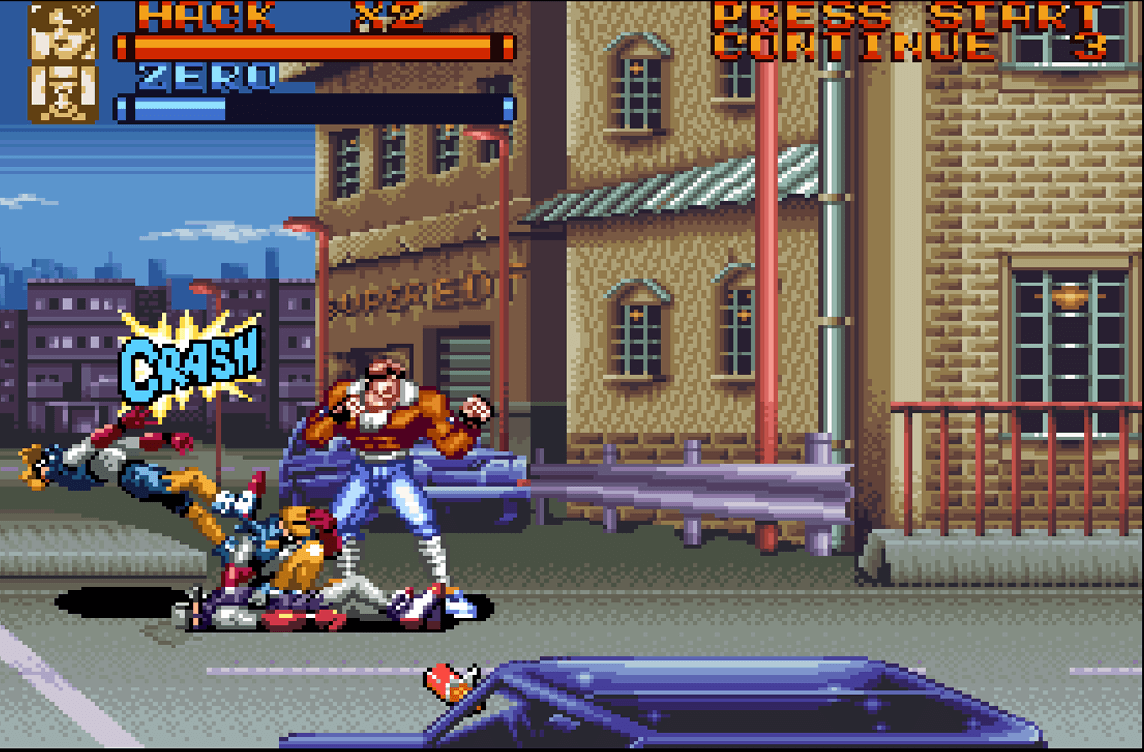Jaleco, a name not unfamiliar to the realm of 16-bit gaming, unleashed a trio of interconnected beat ’em ups on the Super Nintendo Entertainment System (SNES). Though widely recognized in the West under disparate titles, in Japan, these games formed the cohesive Rushing Beat series. The transformation for Western audiences didn’t stop at just rebranding; “Rival Turf!”, Brawl Brothers, and The Peace Keepers underwent alterations in storylines and character identities, presenting a unique case of localization in video game history.
A Closer Look at Brawl Brothers
Brawl Brothers, the sequel to Rival Turf!, continues the narrative with familiar faces under new monikers: Jack Flak and Oozie Nelson return as Hack and Slash. They’re not alone this time, joined by an eclectic trio – Lord J., Kazan, and Wendy, each boasting distinct combat styles encouraging players to explore and find their match.
Gameplay Mechanics: A Mixed Bag of Innovation and Frustration
Diving into Brawl Brothers, players embark on their journey either solo or with a companion, selecting two characters at the onset. This choice, however, doesn’t offer an AI partner but allows for character switching upon continuing after a defeat. An intriguing twist emerges as players encounter and defeat clones of the remaining characters, unlocking the actual characters for future selection. This mechanic, while novel, is somewhat undercut by the limited continue system and the requirement to exhaust all lives before switching characters.
The game structure presents a series of stages, culminating in boss fights. Yet, the journey is not without its trials; lengthy levels and a perplexing maze in the initial stage test players’ patience. Moreover, environmental hazards and a demanding hit detection system add layers of challenge, occasionally tipping into frustration.

Visuals and Combat: Steps Forward and Sideways
Comparatively, Brawl Brothers marks a visual improvement over its predecessor, Rival Turf!. Character animations and a slightly cartoonish design inject vibrancy into the game. The stages, too, shed the derivative aesthetic of “Final Fight” for more engaging environments.
Combat in Brawl Brothers introduces its quirks, notably the handling of weapons and health items. Players can carry food for health replenishment, a feature that demands strategic management amidst the chaos of brawls. However, this mechanic, while innovative, can become another source of annoyance.
In the world of Brawl Brothers, every punch tells a story.
Brawl Brothers stands as a testament to Jaleco’s ambition to innovate within the beat ’em up genre. It offers a blend of character variety and visual improvements over “Rival Turf!” but is ensnared by gameplay irritants that hinder its potential to rival genre staples like “Final Fight” and “Streets of Rage”. While it may not claim the top spot, it remains a noteworthy chapter in the SNES’s library for enthusiasts seeking a glimpse into the evolution of beat ’em ups.

Play Brawl Brothers Online Anywhere, Anytime
Good news for fans and newcomers alike: Brawl Brothers is accessible not just on the SNES platform but can also be enjoyed on modern web browsers, as well as mobile and tablet devices. Dive into the fray and experience this classic beat ’em up wherever you are.